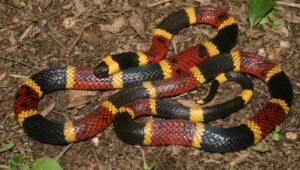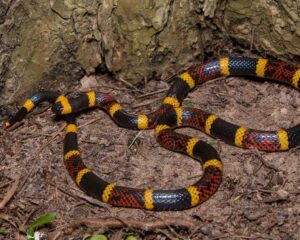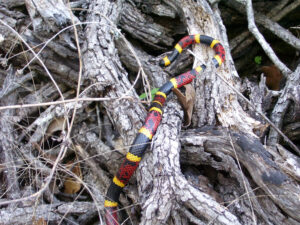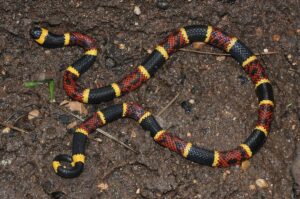The Texas coral snake is an elapid native to central and northeastern Mexico and the southern United States. The secretive, shy snake is typically nocturnal but has the second most powerful venom in the world. The specific name, tener, means soft, referring to its rounded head. It is termed a coral snake due to its brightly colored scales.
Scientific Classifications
- Suborder:Serpentes
- Family:Elapidae
- Genus:Micrurus
- Species:M. tener
Conservation Status
Subspecies
This snake has five recognized subspecies.
- Micrurus tener tener
- Micrurus tener fitzingeri
- Micrurus tener maculatus
- Micrurus tener microgalbineus
- Micrurus tener tamaulipensis
Description
Size
The elapid can grow up to 48 in (122 cm) in total length, including the tail. But most have sizes of nearly 24 in (61 cm). The females are typically larger than the males.
Color and Appearance
The Texas coral snake has the conventional color pattern of coral snakes – black, yellow, and red rings. The red bands only touch the adjacent yellow ones. The eyes have round pupils, and the smooth dorsal scales are arranged in rows of 15 near the midbody. Anerythristic (lacking red pigment) and albinistic (lacking black pigment) specimens have been found in the wild. Pastel (translucent cream, pink, and very light blue) colored and melanistic (entirely black) specimens have also been found.
Are They Dangerous to Humans
It is generally not aggressive and likely to flee upon confrontation. When grabbed suddenly or, sometimes, just touched, the Texas coral snake may thrash about, swing around, and bite. Sometimes, they may be very calm and suddenly swing around and bite for no apparent reason.
The venom of the elapid is a strong neurotoxin that can cause neuromuscular dysfunction. Though rare, fatalities from its bite have occurred in the past, thanks to the antivenom. Its quick bite can cause severe or no envenomation (dry bite). The snake has small fangs in front of its mouth and repeatedly strikes to deliver its venom.
A bite from this snake should be treated as a serious medical emergency, and immediate medical attention should be sought. It is because the symptoms of the envenomation may sometimes take as long as 24 hours to manifest, but once present, the health condition deteriorates rapidly.
Texas Coral Snakes at a Glance
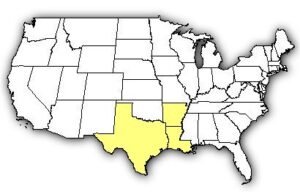
Distribution
It lives in the states of Louisiana, Texas, and Arkansas in the US and in the Mexican states of San Luis Potosí, Tamaulipas, Guanajuato, Morelos, and Querétaro.
Habitat
It can live in various habitats, like savannas, grasslands, forests, and wetlands – generally areas with humid surroundings and moist vegetation.
Most of its time is spent hiding under logs and in leaf litter. It can be seen moving on the surface after heavy rains when the night temperature rises above 78°F.
Lifespan
The Texas coral snake lives for 10-15 years.
Predators
It falls prey to birds of prey like hawks, ground squirrels, spiders, bullfrogs, opossums, and other coral snakes.
Diet
Other snakes, mainly earth snakes and other small burrowing species, form its primary diet. The cannibalistic snake also eats small lizards occasionally. But it rarely consumes rodents.
Reproduction
Oviparous (lays eggs that hatch outside the body)
Clutches of 7-9 eggs are laid in June or July. The hatchlings emerge 2 months later, measuring around 6.5-9.5 in (16.5-24 cm).
Similar Species
The eastern coral snake, Micrurus fulvius, is smaller (shorter and more slender) than the Texas coral snake. The former also has a lesser venom yield.
Milk Snake
The non-venomous milk snake, Lampropeltis triangulum, a species of kingsnake, has a pattern of yellow, black, and red bands. The yellow bands touch the black ones. An old rhyme helps in differentiating the two – Red and yellow kill a fellow, red on black friend of Jack. Plus, the coral snake’s head is more rounded.
Source
gannett-cdn.com, animalia-bio.org, venombyte.com, tpwd.texas.gov, i.pinimg.com

